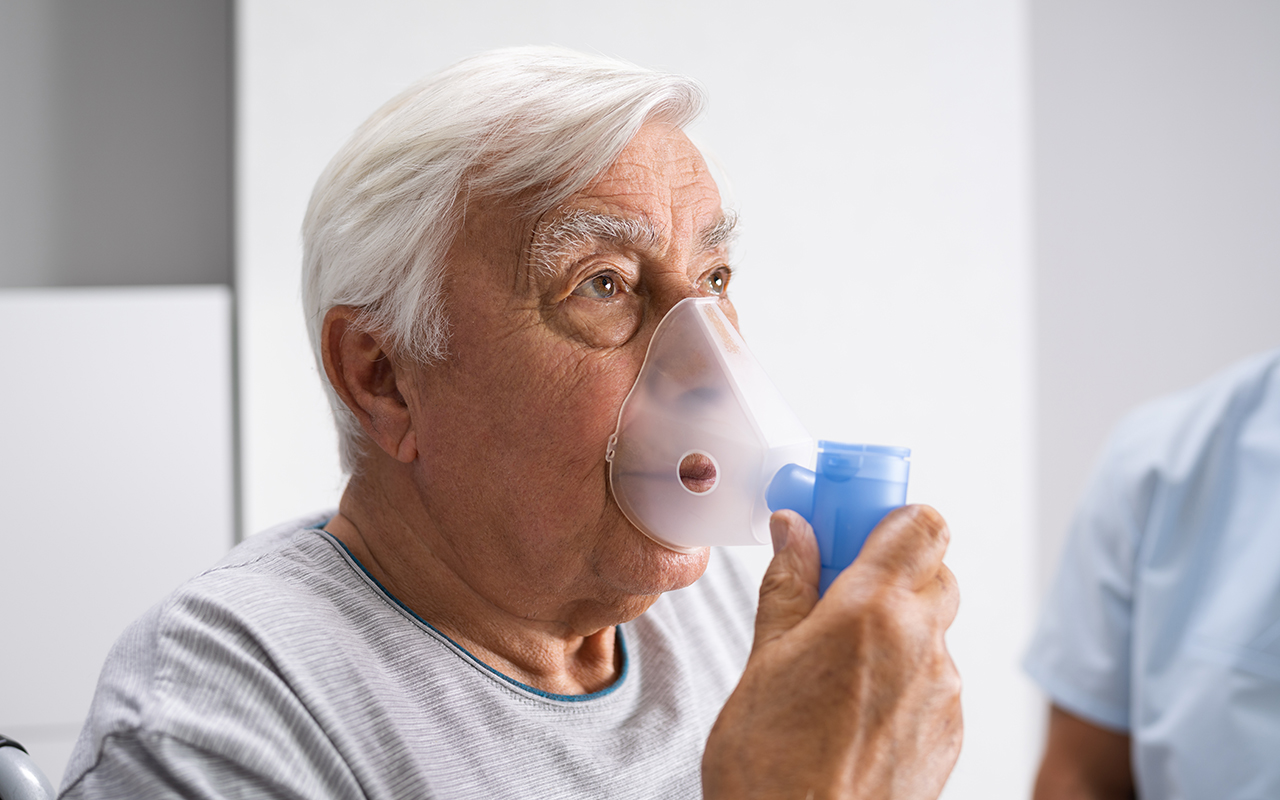UPDATED guidelines for the management of chronic obstructive pulmonary disease (COPD) include both non-pharmacological and pharmacological strategies to reflect the importance of a holistic approach to clinical care for people living with the disease.
Developed by the Lung Foundation Australia and the Thoracic Society of Australia and New Zealand, and published as a summary in the MJA, the guidelines include 26 recommendations addressing:
- case finding and confirming diagnosis – confirmation by spirometry, blood eosinophil levels, behaviour and risk factors (smoking, treatment adherence, self-management skills, physical activity, comorbid conditions);
- optimising function – non-pharmacological therapies, pharmacological therapies, managing comorbid conditions, palliative care, lung volume reduction surgery, pulmonary rehabilitation, non-invasive ventilation;
- preventing deterioration – smoking cessation, immunisation, oxygen therapy, prophylactic antibiotics, biologic therapies, palliative care, home bilevel ventilation;
- developing a plan of care; and
- managing exacerbations – pharmacological management, non-invasive ventilation, and multidisciplinary care.
“About one in 13 Australians over the age of 40 years is estimated to have chronic obstructive pulmonary disease (COPD),” wrote the authors, led by Associate Professor Eli Dabscheck, a respiratory and sleep physician from Melbourne’s Alfred Hospital.
“In 2018, COPD was the leading cause of potentially preventable hospitalisations, the third leading specific cause of total disease burden, and the fifth leading cause of death in Australia. The impact of COPD is even greater among Indigenous Australians compared with non-Indigenous Australians.”
Non-pharmacological therapies for COPD include walking and structured exercise, as well as pulmonary rehabilitation to improve breathlessness, exercise performance, physical activity level and health status. Pharmacological therapies, including short- and long-acting inhaled bronchodilators, inhaled corticosteroids (ICS), and long-acting β-agonists, are evaluated in the guidelines.
The full guidelines are available at https://copdx.org.au/.
Supervised injecting centres: 21 years of evidence
TWENTY-one years after the establishment of the Uniting Sydney Medically Supervised Injecting Centre (MSIC), research shows that, rather than becoming a “honeypot”, the MSIC has led to improved and sustained public amenity, leading to a call for the establishment of more supervised injecting facilities. Associate Professor Carolyn Day, from the University of Sydney, and colleagues wrote in the MJA that they had “addressed key questions regarding [supervised injecting facility (SIF)] operations and contend that there is sufficient evidence to support SIF rollout and expansion”. “Good policy, with clear legislation and careful management of clients within a harm reduction framework, can and does alleviate problems that may be perceived as inherent to the operation of such services. Given the solid evidence, current governments, in Australia and elsewhere, should expand SIF services without unnecessary protracted trial periods. The key challenge in SIF expansion is supporting legislation. Questions regarding the scientific and operational merit of SIFs have been answered. After 21 years of success, it is time for robust support for further services to be implemented both within Australia and internationally.”
Neurological manifestations of COVID-19 in adults and children
An international group of researchers, including from Australia, have detailed the differences in neurological manifestations of COVID-19 in adults and children in an article published in Brain. Researchers analysed data from the International Severe Acute Respiratory and emerging Infection Consortium cohort across 1507 sites worldwide from 30 January 2020 to 25 May 2021 – 161 239 patients (158 267 adults, 2972 children) admitted to hospital with COVID-19 and assessed for neurological manifestations and complications were included. “In adults and children, the most frequent neurological manifestations at admission were fatigue (adults: 37.4%; children: 20.4%), altered consciousness (20.9%; 6.8%), myalgia (16.9%; 7.6%), dysgeusia (7.4%; 1.9%), anosmia (6.0%; 2.2%), and seizure (1.1%; 5.2%). In adults, the most frequent in-hospital neurological complications were stroke (1.5%), seizure (1%), and central nervous system (CNS) infection (0.2%). Each occurred more frequently in [intensive care unit (ICU)] than in non-ICU patients. In children, seizure was the only neurological complication to occur more frequently in ICU vs. non-ICU (7.1% vs. 2.3%, P < .001). Stroke prevalence increased with increasing age, while CNS infection and seizure steadily decreased with age. There was a dramatic decrease in stroke over time during the pandemic. Hypertension, chronic neurological disease, and the use of extracorporeal membrane oxygenation were associated with increased risk of stroke. Altered consciousness was associated with CNS infection, seizure, and stroke. All in-hospital neurological complications were associated with increased odds of death. The likelihood of death rose with increasing age, especially after 25 years of age.”
Counting steps important but faster cadence matters too
Research published in JAMA Internal Medicine, including authors from the University of Sydney, has found that accumulating more steps per day (up to about 10 000) may be associated with a lower risk of all-cause, cancer, and cardiovascular disease (CVD) mortality and with lower incidence of cancer and CVD, and that higher step intensity may provide additional benefits. The authors analysed data from 78 500 participants in the UK Biobank for 2013–2015, including adults aged 40–79 years. Participants were invited by email to partake in an accelerometer study. Registry-based morbidity and mortality were ascertained through October 2021. “The study population … was followed for a median of 7 years during which 1325 participants died of cancer and 664 of CVD (total deaths 2179). There were 10 245 incident CVD events and 2813 cancer incident events during the observation period. More daily steps were associated with a lower risk of all-cause ([mean rate of change (MRC)], −0.08; 95% CI, −0.11 to −0.06), CVD (MRC, −0.10; 95% CI, −0.15 to −0.06), and cancer mortality (MRC, 95% CI, −0.11; −0.15 to −0.06) for up to approximately 10 000 steps. Similarly, accruing more daily steps was associated with lower incident disease. Peak-30 cadence was consistently associated with lower risks across all outcomes, beyond the benefit of total daily steps,” the authors reported. “Steps performed at a higher cadence may be associated with additional risk reduction, particularly for incident disease.”
Subscribe to the free InSight+ weekly newsletter here. It is available to all readers, not just registered medical practitioners.

 more_vert
more_vert
I strongly disagree that Headspace provides value for money.